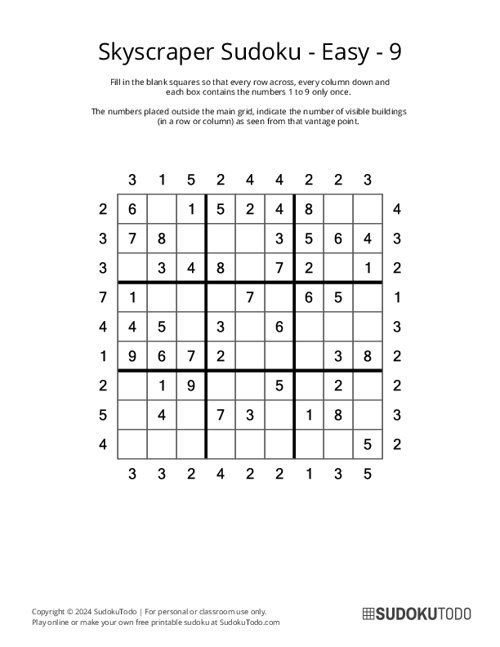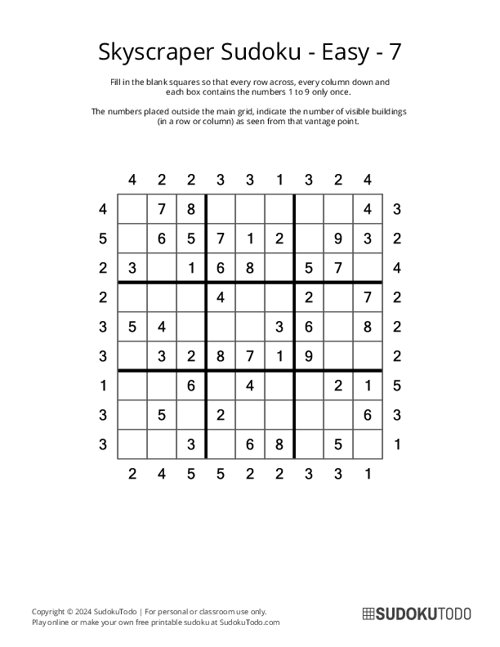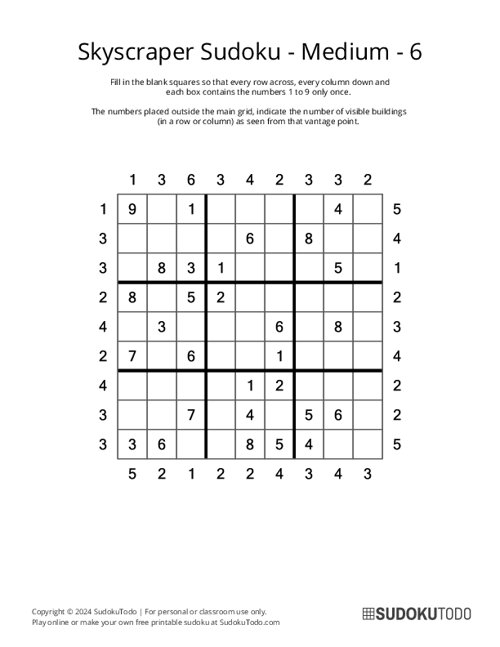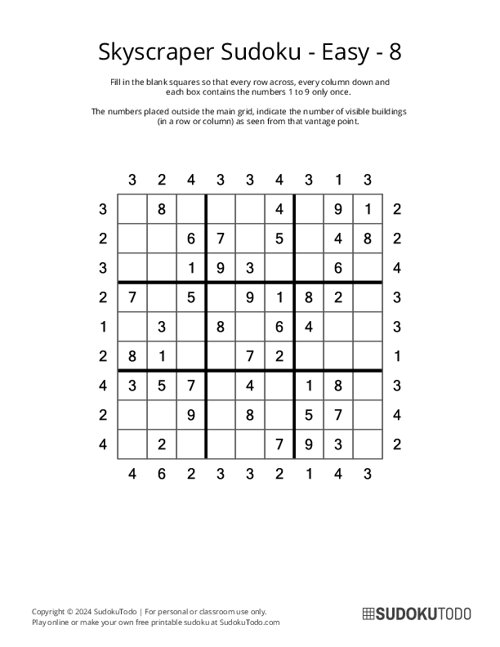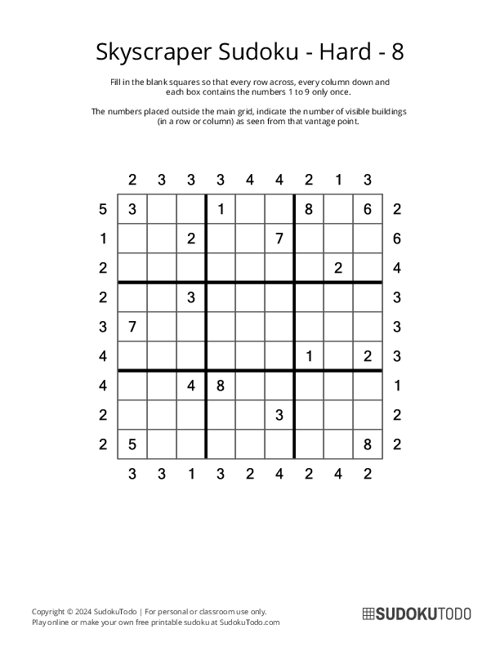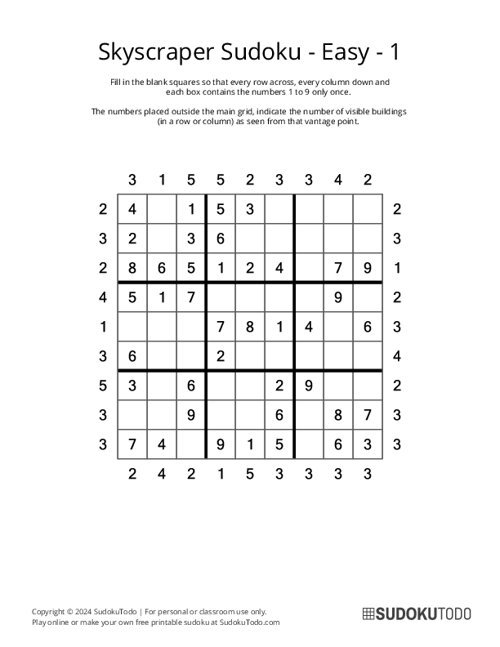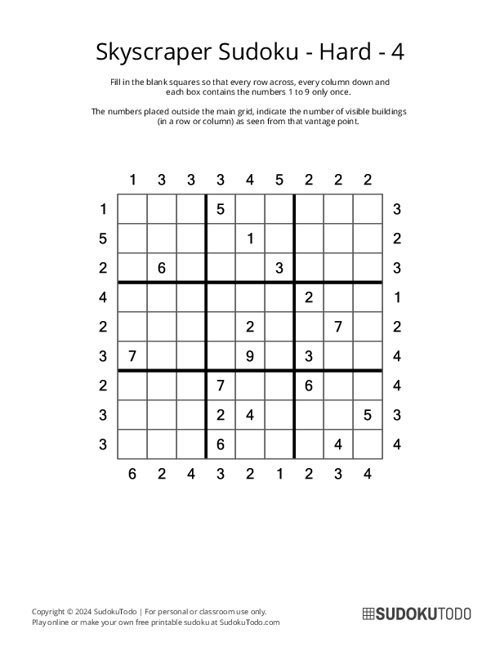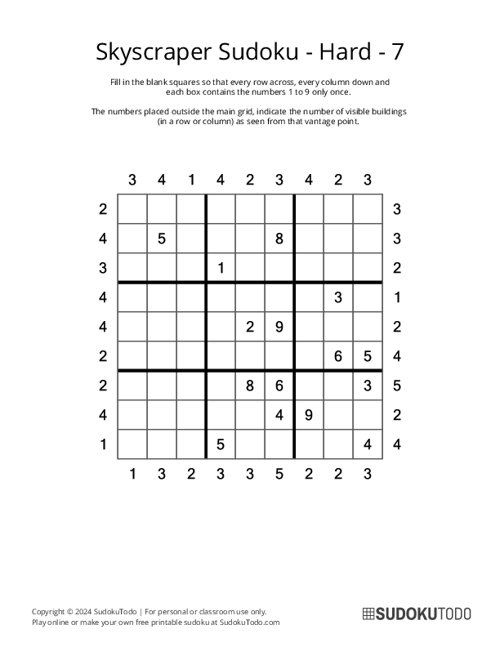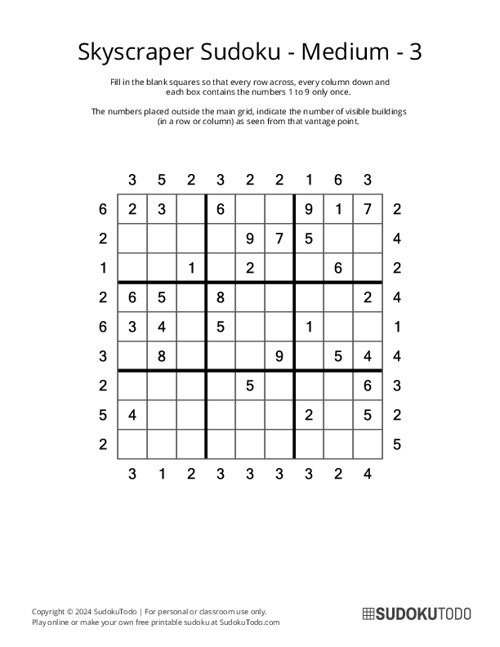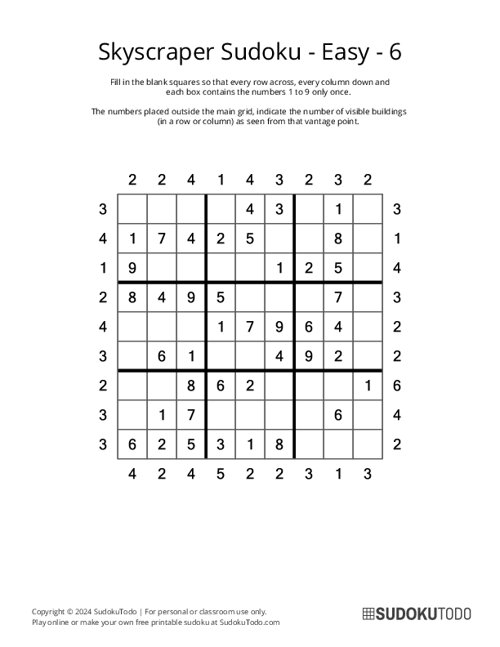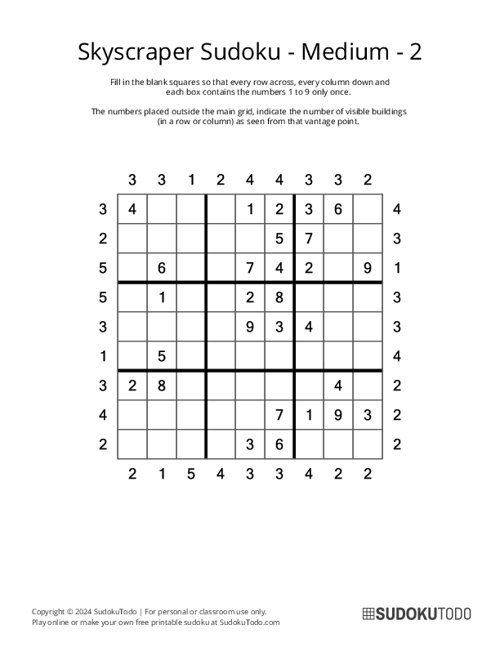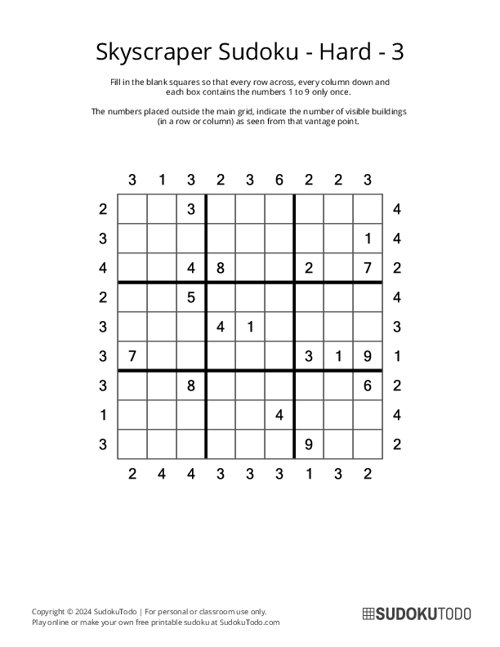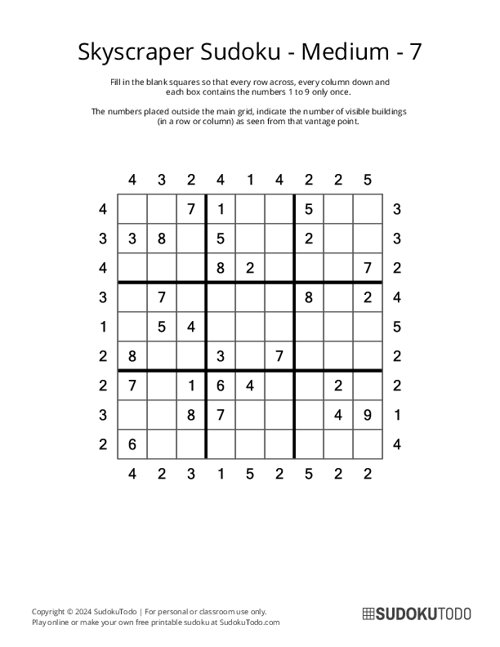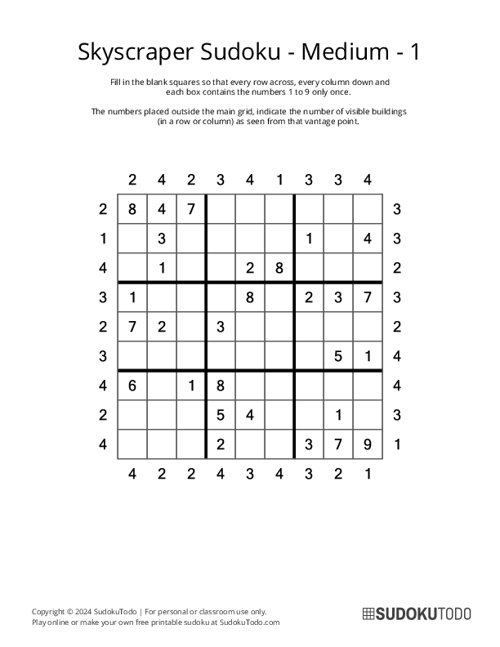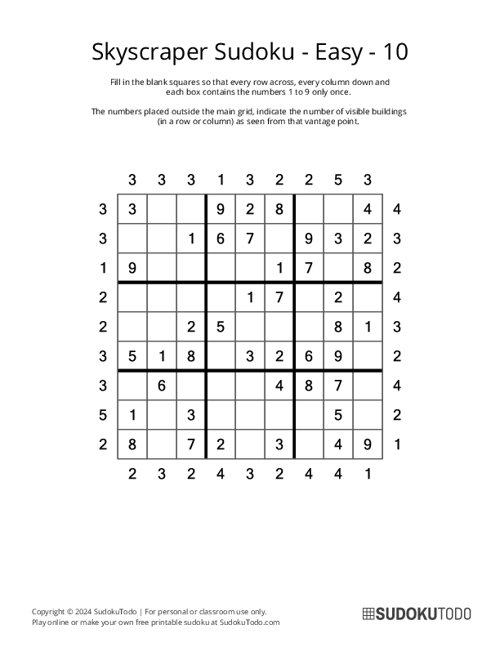Printable Sudoku
- Alphabet
- Battleships
- Binary
- Bridges / Hashi
- Chain Sudoku
- Consecutive
- Cross Sudoku
- Flower Sudoku
- Frame Sudoku
- Futoshiki
- Galaxies
- Greater Than
- Hitori
- Jigsaw Sudoku
- Kakuro
- KenKen
- Killer Sudoku
- Kropki Sudoku
- Little Killer
- Magic Squares
- Nonogram
- Odd Even Sudoku
- Outside Sudoku
- Rossini Sudoku
- Samurai Sudoku
- Sandwich
- Skyscraper
- Slitherlink
- Sohei Sudoku
- Star Battle
- Sudoku
- Sudoku for Kids
- Sudoku Mine
- Sudoku XV
- Sujiken
- Tripledoku
- Tripod Sudoku
- Twodoku
- Vudoku
- Windmill
Special Variations
Generate
Play / Solve
- Home»
- Skyscraper
Skyscraper Sudoku Puzzles
Download free printable Skyscraper Sudoku puzzles for all skill levels. Enjoy challenging brain games that improve logic, reasoning, and problem-solving abilities. Download, print and start solving using pen or pencil.
Showing 1-15 of 30 records
Sort by:
Skyscraper Sudoku - Easy - 9
Skyscraper Sudoku - Easy - 7
Skyscraper Sudoku - Medium - 6
Skyscraper Sudoku - Easy - 8
Skyscraper Sudoku - Hard - 8
Skyscraper Sudoku - Easy - 1
Skyscraper Sudoku - Hard - 4
Skyscraper Sudoku - Hard - 7
Skyscraper Sudoku - Medium - 3
Skyscraper Sudoku - Easy - 6
Skyscraper Sudoku - Medium - 2
Skyscraper Sudoku - Hard - 3
Skyscraper Sudoku - Medium - 7
Skyscraper Sudoku - Medium - 1
Skyscraper Sudoku - Easy - 10
About Skyscraper Sudoku
Skyscraper Sudoku is a special version of Sudoku that adds an extra challenge inspired by city skylines. Along with the usual Sudoku rules, there are "skyscraper height" clues around the edges of the grid. These clues make the puzzle more fun and interesting for people who enjoy logic games.
Basic Rules / How to Play
- Grid Size: The puzzle consists of a 9x9 grid, divided into nine 3x3 sub-grids, often referred to as "boxes" or "regions."
- Unique Numbers: Each row, column, and sub-grid must contain the digits 1 through 9 exactly once.
Skyscraper Clues
- Numbers in the grid represent the "heights" of skyscrapers.
- Clues are placed around the edges of the grid, outside the rows and columns.
- Each clue indicates how many skyscrapers are visible from that direction, considering the heights of the skyscrapers.
- Taller skyscrapers block the view of shorter ones behind them.
- Example: If the clue is "4" and the row starts with skyscrapers of height 1, 3, 5, and 6: The visible skyscrapers are 1, 3, 5, and 6 because no taller skyscraper blocks the view.
Solving Tips and Techniques:
- Clue Numbers: Start with the rows or columns with the highest or lowest clues, as these are often easier to deduce.
- Understanding Visibility: Begin by looking at the visibility clues and use them to limit the possible numbers for each cell. For example, a '1' clue means the tallest building (9) must be in the front of that row or column.
- Elimination: If a certain building height cannot be placed in a particular cell due to a clue or other constraints, eliminate that possibility.
- Edge Clue Deduction: Start by working through the rows or columns, focusing on the strongest clues first, like high numbers (8 or 9) and low numbers (1 or 2). Use these clues to narrow down the possible heights in the grid.
- Reverse Logic: Think about working in the opposite direction of the clue (for example, the right side if you're starting from the left). This can help you figure out which numbers need to go in place to satisfy both directions at once.
- Pencil Marks: Use pencil to write possible numbers in each cell. As you figure out where numbers go, cross out the ones that don't work.
Skyscraper Sudoku mixes the logic of Sudoku with a puzzle about space and positioning, creating a fun and interesting challenge!
